CAT DILR Questions | CAT Data Sufficiency questions
FundaMakers is the Best CAT Online Coaching In India. Now prepare for CAT anytime with FundaMakers. We provide well-ordered syllabus coverage for both offline and online CAT preparation batches. FundaMakers brings to you the power-packed, well-structured CAT previous year question bank with more than 4000+ CAT Past Year questions. Data Interpretation and Logical Reasoning (DILR) covers 30-32% part of the total CAT paper. It is one of those sections whose preparation strategy building is very tricky and is subjective to the mental ability and hard work of the aspirant. A decent score in the DILR section for CAT will not only increase the overall percentile in the CAT Exam but will also be considered in the sectional cutoff.
FundaMakers as a team has taken a painstaking step to bring you all the video solutions of the Data Interpretation and Logical Reasoning (DILR) asked in the Previous Year CAT exam. CAT question bank offered by FundaMakers is a power-packed topic-wise compilation of the entire CAT previous year questions. DILR is mostly about meticulous practice, as there are minimal concepts to learn. To maximize your CAT score in DILR make use of FundaMakers CAT Question Bank. “Questions from CAT previous years” examination papers have been incorporated. Let’s get started with CAT Past Year Data Interpretation and Logical Reasoning (DILR) Questions.
Comprehension
Direction for the questions: Read the information carefully and answer the questions accordingly.
10 players – P1, P2, … , P10 - competed in an international javelin throw event. The number (after P) of a player reflects his rank at the beginning of the event, with rank 1 going to the topmost player. There were two phases in the event with the first phase consisting of rounds 1, 2, and 3, and the second phase consisting of rounds 4, 5, and 6. A throw is measured in terms of the distance it covers (in meters, up to one decimal point accuracy), only if the throw is a ‘valid’ one. For an invalid throw, the distance is taken as zero. A player’s score at the end of a round is the maximum distance of all his throws up to that round. Players are re-ranked after every round based on their current scores. In case of a tie in scores, the player with a prevailing higher rank retains the higher rank. This ranking determines the order in which the players go for their throws in the next round.
In each of the rounds in the first phase, the players throw in increasing order of their latest rank, i.e. the player ranked 1 at that point throws first, followed by the player ranked 2 at that point and so on. The top six players at the end of the first phase qualify for the second phase. In each of the rounds in the second phase, the players throw in decreasing order of their latest rank i.e. the player ranked 6 at that point throws first, followed by the player ranked 5 at that point and so on. The players ranked 1, 2, and 3 at the end of the sixth round receive gold, silver, and bronze medals respectively.
All the valid throws of the event were of distinct distances (as per stated measurement accuracy). The tables below show distances (in meters) covered by all valid throws in the first and the third round in the event.
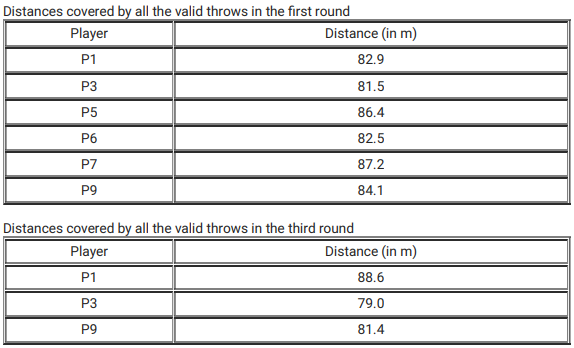
The following facts are also known:
i. Among the throws in the second round, only the last two were valid. Both the throws enabled these players to qualify for the second phase, with one of them qualifying with the least score. None of these players won any medal.
ii. If a player throws first in a round AND he was also the last (among the players in the current round) to throw in the previous round, then the player is said to get a double. Two players got a double.
iii. In each round of the second phase, exactly one player improved his score. Each of these improvements was by the same amount.
iv. The gold and bronze medalists improved their scores in the fifth and the sixth rounds respectively. One medal winner improved his score in the fourth round.
v. The difference between the final scores of the gold medalist and the silver medalist, as well as the difference between the final scores of the silver medalist and the bronze medalist was 1.0 m.
Explanatory Answer
Method of solving this CAT DILR Question from Data Sufficiency question
Correct Option: B
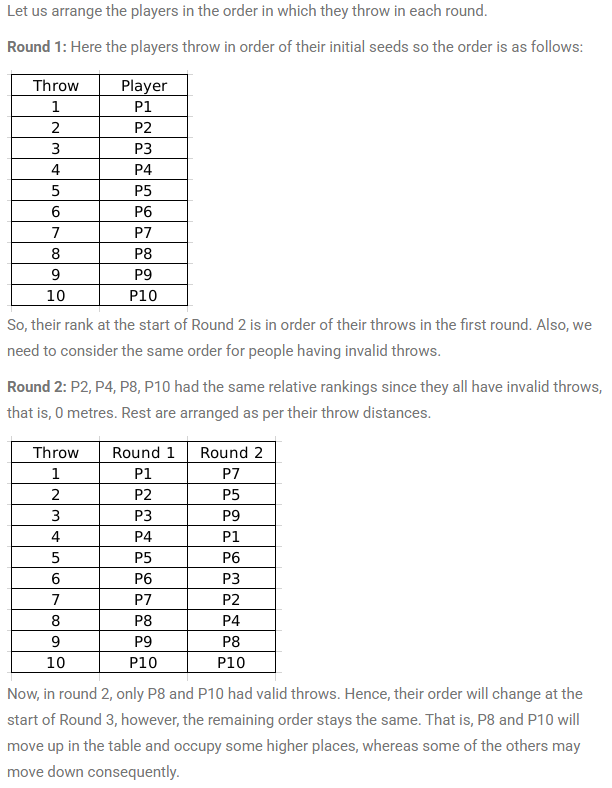
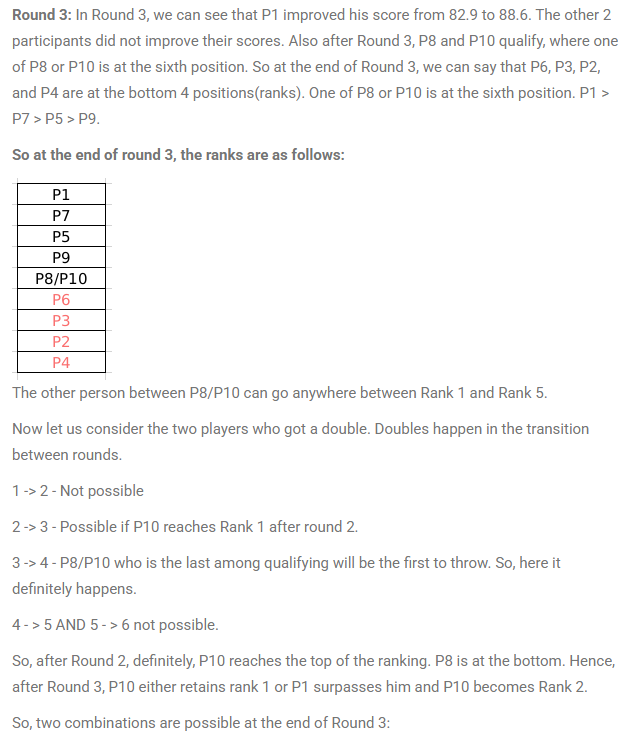
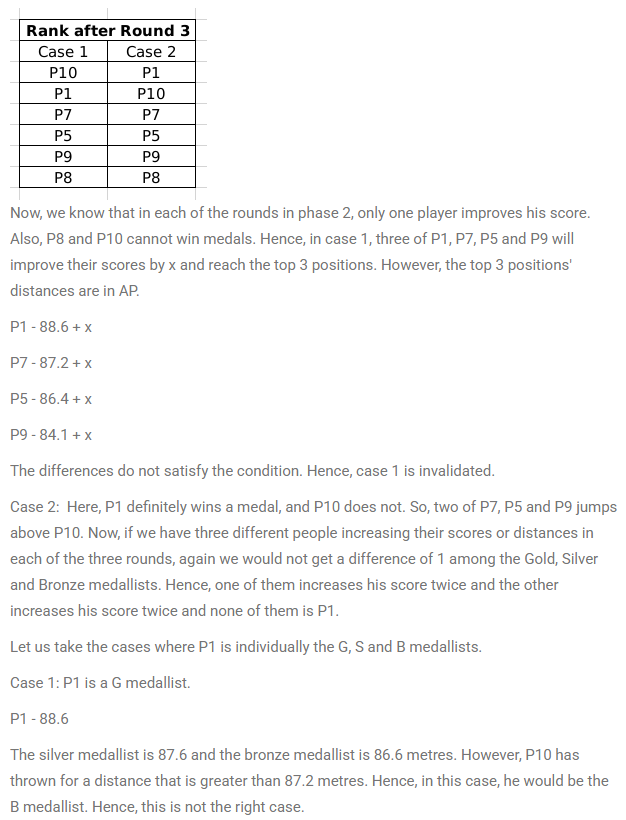
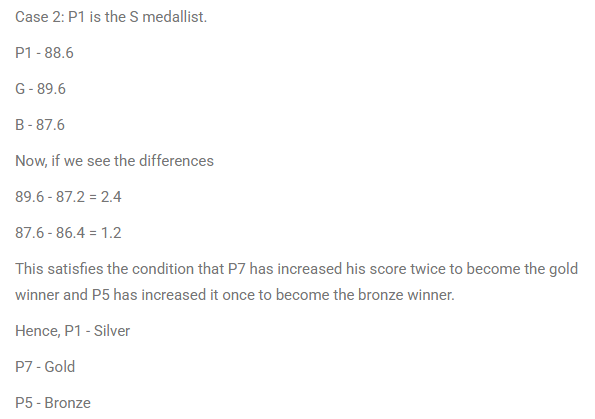

Hey!
Worried about IIM calls due to your marks in 10th,12th, and Graduation?
Don't worry! Know your chances of getting an IIM Call based on your profile with our:-
Profile Professor: https://fundamakers.com/profile-professor/

5 Must- NOT-Dos during CAT Preparation.
- Do not treat CAT as 'Everything'.
- Do not quit your job for CAT exam preparation.
- Learning till The Eleventh hour instead of doing proper revision.
- Not checking the syllabus thoroughly.
- Piling up multiple books.
Click To Read:- Common mistakes made by CAT aspirants during preparation.
FundaMakers- Best Online and Offline CAT Online Preparation Institute in India
For any CAT Preparation related query, reach out to us at 9598333344.